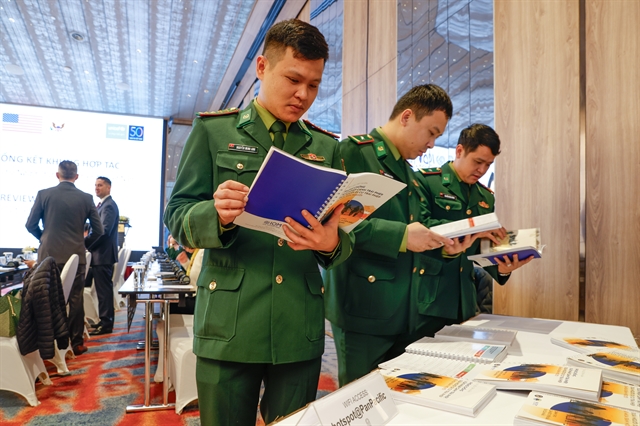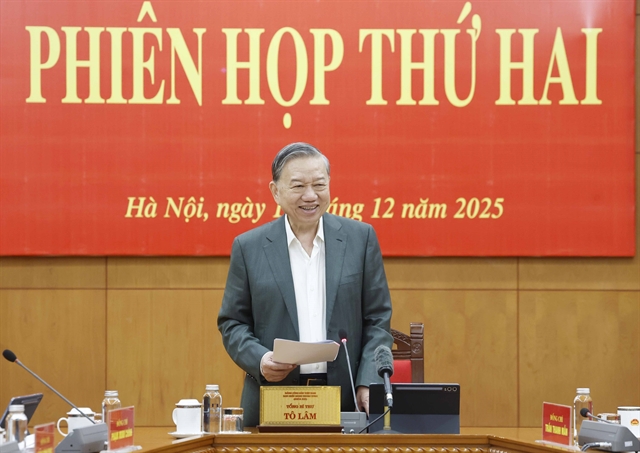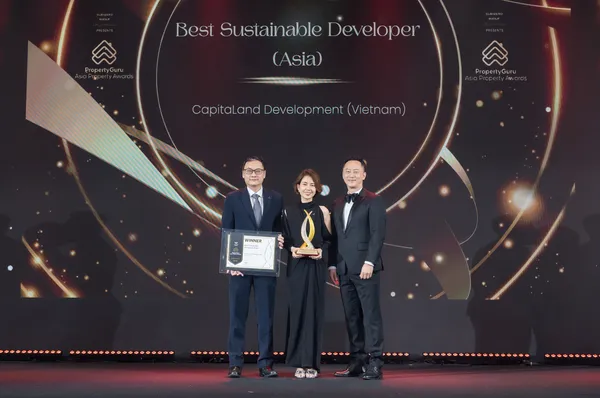 Brandinfo
Brandinfo

Combination of favourable factors
Bà Rịa-Vũng Tàu province is strategically located with a coastline of over 300 km and a continental shelf of 100,000 square km. The province is blessed with abundant marine resources and has the largest reserves of oil and gas in Vietnam. With these advantages, it is well-positioned to develop its maritime economy, including activities such as oil and gas exploitation, tourism, fishery, maritime services, and logistics.
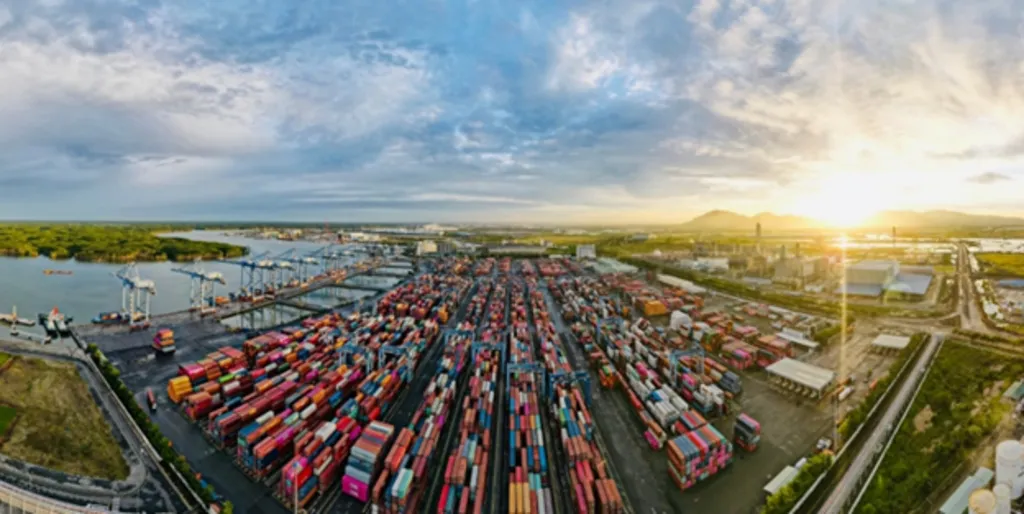 |
| Tân Cảng-Cái Mép is a seaport in the Cái Mép-Thị Vải port cluster that can accommodate large cargo ships. Image: TCIT |
The Cái Mép-Thị Vải port cluster is situated along the Thị Vải River in a province with a naturally deep waterway, making it capable of receiving large cargo ships. The port cluster is strategically located near major international shipping routes and has played a crucial role as a gateway for trade and a vital international transshipment port for many years. The area is always bustling with weekly routes connecting Asia, Europe, and the Americas.
The province is expected to have 69 seaports, of which 50 ports are active with a combined handling capacity of 150 million tons per year. The province is currently developing 8 large container ports with a combined handling capacity of 8.3 million TEUs per year. Among these, the Cái Mép-Thị Vải seaport is one of the world’s 19 largest ports capable of accommodating mega ships. The province’s export turnover of goods through these ports has been consistently increasing.
The province has a diverse range of logistics services and post-port support, including transportation, warehouse services, and other support services. It is now home to over 300 businesses engaged in cargo transportation and logistics warehouse services. There are currently 20 logistics warehouse projects in operation, covering a total land area of about 224 hectares, with 10 projects under construction totaling approximately 42 hectares. The Phú Mỹ inland port, which started operations in August 2023, is currently considered the most modern and largest inland port in the province. This port is seen as an extension of the Cái Mép-Thị Vải port cluster.
Political determination
Experts have long recognized that Bà Rịa-Vũng Tàu province has all the necessary conditions to establish and develop a deep-water seaport system of national and international significance. In 1992, the Vietnamese Government approved a comprehensive plan to develop the Thị Vải deep-water port system in Bà Rịa-Vũng Tàu province. After 20 years of implementing the plan, the seaports in the province have evolved into crucial gateways for Vietnam and the Southeast Asian region.
The Vietnamese Government classified the Bà Rịa-Vũng Tàu seaport system as one of the country’s two special seaports in Decision 804/QD-TTg issued on July 8, 2022. Resolution 24-NQ/TW, issued by the Communist Party of Vietnam’s Politburo on socio-economic development, national defence, and security assurance in the Southeast region until 2030, with a vision towards 2045, determined that investing in the development of the logistics system and international transshipment ports in Bà Rịa-Vũng Tàu province is entirely in line with its potential and advantages. Accordingly, it is necessary to continue modernizing the international gateway port of Cái Mép - Thị Vải into a major international transshipment port, with regional and international significance. The establishment of a Free Trade Zone linked to the seaport in the Cái Mép Lower area aims to provide impetus for the development of the Southeast region.
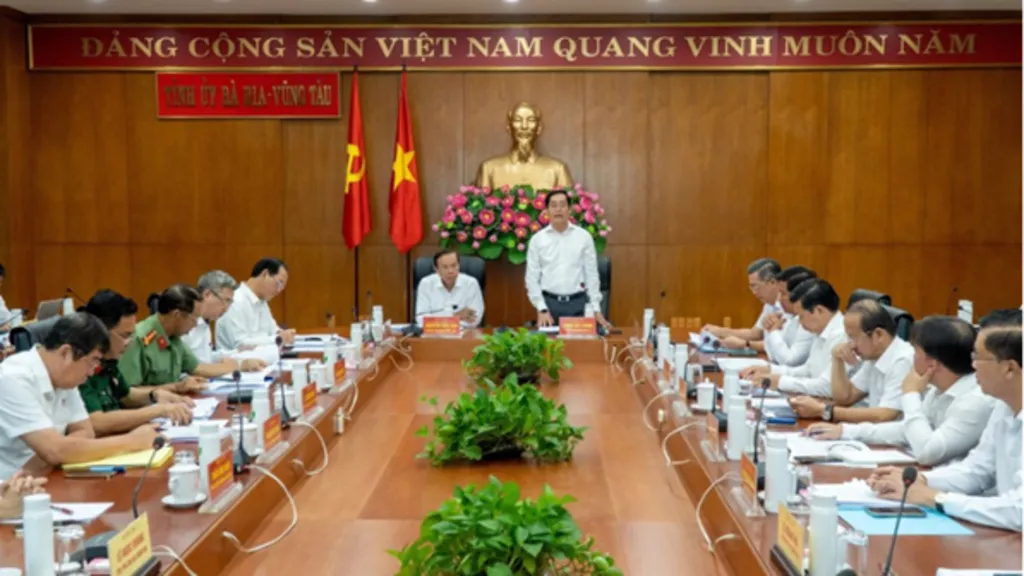 |
| The Ba Ria-Vung Tau Provincial Party Executive Committee held a meeting to discuss provincial planning in the period of 2021-2030 with a vision towards 2050 |
Bà Rịa-Vũng Tàu province has consistently identified seaports and logistics among its four economic pillars, serving as a driving force to promote its socio-economic development in the coming years. In Resolution 05/NQ-HDND, dated May 31, 2023, it continued to emphasize the crucial role of the maritime and logistics sector. With a vision towards 2050, the province aims to become the national maritime economic center and the maritime service hub of the Southeast Asia region.
The province has outlined several specific plans to realize its target. These include planning a synchronized and interconnected transportation network with the national, regional, and provincial systems to create a seamless and efficient network; planning the industrial-port functional area; forming a development axis along the Thị Vải River linked with the inter-port transportation system and National Highway 51; developing a logistics infrastructure plan linked with commercial and information technology infrastructure, with conditions suitable for the application of artificial intelligence and high-tech connectivity; and establishing a strong connection between the national special-class seaport system and the international airport in Long Thành.
To improve the overall economic growth, the province is investing in infrastructure development, including industrial parks and ports. In addition to this, it is also focusing on enhancing policies and the quality of the workforce./.
Hồng Út

